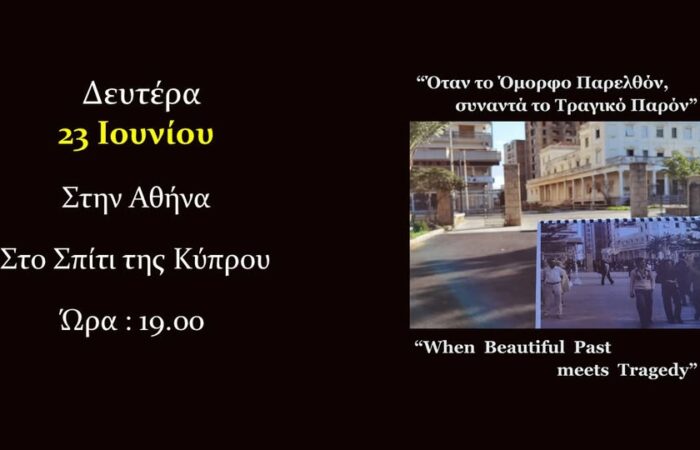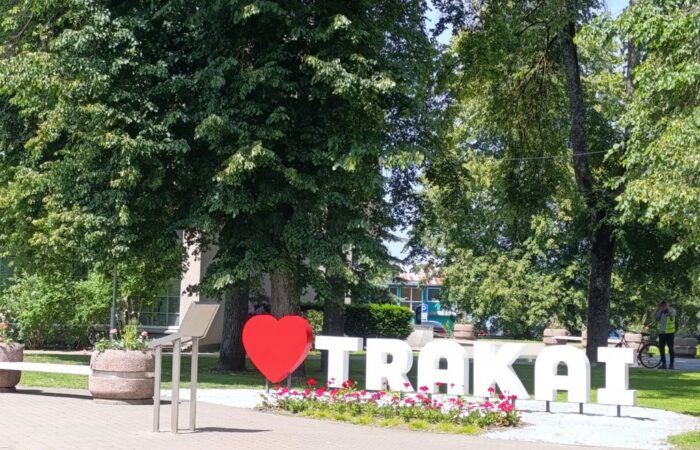By Philippos Stylianou
Three motorways from the major towns of Cyprus converge on the picturesque village of Tochni, yet sign-posting does not make it so easy to find as one might expect. To be on the safe side, whether you are driving 43 km from Nicosia, 28 km from Larnaca or 31 km from Limassol, go straight for the world-famous Neolithic settlement of Khirokitia and follow the sign to Tochni, unless of course you have a GPS. If Saint Helena could get there in the 4th century A.D. without one, so can you.
Only about 5 km to the west of Chirokitia, Tochni is famous on its own right both for its rich traditional heritage and the local stone of which its houses are built. It is situated on two facing hillsides at a varying elevation of 120-320 m with a torrent running in between, albeit with an ancient church sitting miraculously astride it on a bridge, as we shall see anon. 
Its name features on medieval maps dating to the Frankish rule of Cyprus (1192-1489) as Togni and Docni under the feudal system prevailing then, but it is unmistakably of Greek origin – Τόχνη – although its precise meaning is elusive. A likely explanation is that it may derive from the name of the stone itself. 
Sainte Helena was here
Tochni is central to the tradition of a royal visitation to Cyprus by Saint Helena, mother of the first Christian Roman Emperor Constantine. The formidable lady came long before Indiana Jones as the pioneer discoverer and restorer of religious artefacts, in the particular case none other than the Holy Cross on which Christ was crucified in Jerusalem. The momentous expedition having successfully been completed around 328 A.D., the Queen Mother secured the Holy Cross proper in situ and was returning to Constantinople carrying pieces of the footrest to which the Saviour’s feet had been nailed and the dismantled crosses of the two thieves. Whether by design or by chance she landed in Cyprus on the southern coast at the estuary of a river, which is to this day called The Royal River – Vasilopotamos. 
The story is too long and winding to relate as a whole, suffice it to say that according to various versions of it by medieval writers, among them the local 14th century Leontios Macheras, Saint Helena woke up from a dream to find that her precious cargo had disappeared. She was led by beams of light to recover it at more than one place and wherever it was manifested to her she built a church and invested it with splinters of the True Cross and that of the Good Thieve. This is how the Tochni church with the bridge over the river came to be, although the original one was destroyed and rebuilt. Initially called the Church of the Holy Cross, it was later renamed the Church of Saints Constantine and Helena. An icon depicting the two with the Cross and dating to 1798 is among its valuable treasures while more icons and holy relics can be seen in an adjoining little museum. The medieval remnants of a small Latin chapel still stand in the vicinity. 
Secret
Part of the Larnaca district, the village is designated for agro tourism featuring among other facilities a bicycle centre both for locals and visitors, who like to explore its graphic streets and scenic countryside. This makes for good appetite which is well catered for by the local taverns, while the traditional coffee shops provide rest and relaxation. 
The sepia hue of the local stone makes the entire village appear as rising out of the earth and its breath-taking blend with traditional architecture keeps the index finger constantly fixed on the camera shutter. But there is a secret here as the community chairman Pantelis Charalambous was bold enough to share with a group of tourism journalists and writers recently. 
No more Tochni houses are being built of the stone that made it famous. The reason is that the quarries are right next to the village and their further exploitation would result in an environmental disaster. Who would want to come here with all the noise and dust that stone extraction entails? So they have been left idle for some time now and a picture of neglect and abandonment has already set in where the major activity of the village once thrived.

New houses built with conventional materials are already making their presence felt following traditional architecture, hopefully to continue so in order for the particular character of the place to be preserved.
Challenges
The population of Tochni is around 450 people, half of what it used to be before the Turkish invasion of 1974, since its slightly Turkish Cypriot majority fled to the occupied northern part of the island. In the wake of the atrocities committed by the Turkish army, ferocious acts of revenge took heavy toll on the Turkish Cypriots of Tochni. Notwithstanding the sad past, quite a few of them today cross over to visit their properties, as Mr. Charalambous was pleased to note. The Turkish Cypriots lived mainly on the eastern hillside, where their well-preserved mosque, unique in that it did not have a minaret, is one of the village sights. 
The administrative boundaries of Tochni stretch as far as the sea where Saint Helena had disembarked bringing with her the power of the Cross. It is now the site of a new power symbol clearly visible from the village: the energy centre of Cyprus, combining the fuel storage facilities of the oil companies and the LNG import terminal, which when operational will have far-reaching effects on the local communities and the island as a whole. For the former part of the project, Tochni shares jurisdiction with the neighbouring communities of Mari, Zygi and Kalavasos, but the LNG section with a scheduled new commercial harbour lie solely in its own domain. The locals are poised to meet the emerging challenges of the future while preserving the traditional values of the past. 
CAPTIONS
- The church of the Saints Constantine and Helena sits on a bridge in the middle of the village.
- A small in size but great in content religious museum stands in the churchyard.
- The mosque of the village sports a small staircase for the call to prayer by the hodja instead of a spiralling minaret.
- View of the western hillside of the village from the eastern one.
- The road separating the east and west part of Tochni.
- The old stone quarries have been abandoned for the sake of environmental protection.
- Traditional stone houses line the streets of Tochni.
- Bicycle is the way to see and enjoy Tochni.
- The all-important project of the new Energy Centre of Cyprus as seen to emerge at Vasiliko from the village of Tochni.

Philippos Stylianou




